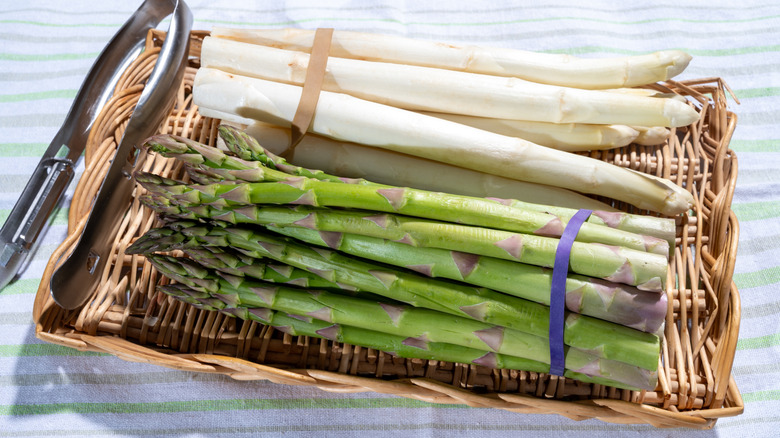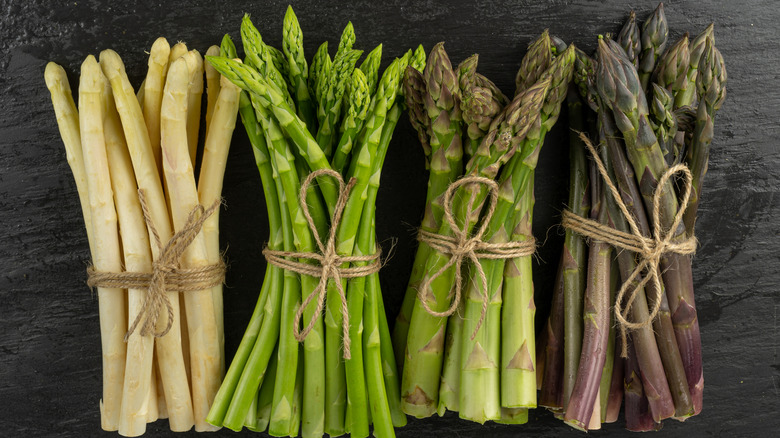When To Use Thin, Medium, And Thick Asparagus In A Recipe
Asparagus can be tricky to cook if you aren't quite sure what you are doing. Granted, there's tons of great tips out there from great chefs, like Julia Child's tips for making tender asparagus or Gordon Ramsay's tips for making flavorful asparagus. However, one small thing might be getting in your way when making asparagus that most people haven't even considered: stalk thickness.
The thickness of asparagus stalks matters for several reasons. It can affect preparation, cooking time, and even the cooking method. As such, certain recipes suit certain thicknesses better. Thin asparagus is great for stir-frying, while thick asparagus is great for roasting or grilling; asparagus of medium thickness can be used for nearly any method.
When it comes to cooking, sometimes picking the right produce can make all the difference, and understanding which stalk thickness suits which recipes can be a game-changer. Next time you're trying out an asparagus recipe, give a little more consideration to asparagus thickness. It could be the one little but overlooked mistake standing between you and making perfect asparagus.
The right asparagus for the right recipe
A good general rule of thumb to follow is to use thinner asparagus for side dishes and thicker asparagus for larger dishes or even main courses. This mostly makes sense simply due to the amount of flesh on the asparagus. From there, the decision making comes down to the actual cooking method itself.
Say you are working with thinner asparagus. The trick is to think light and quick; thin asparagus is great for sautéing, stir-frying, or even braising. If you're willing to do a little more work, thin asparagus is also great for pureeing into light soups or dips.
With thicker asparagus, you can start going bigger. These can be roasted in an oven or skewered and grilled; the best thing about thicker asparagus is they can be more easily cooked as whole spears, as their size allows them to hold up better.

